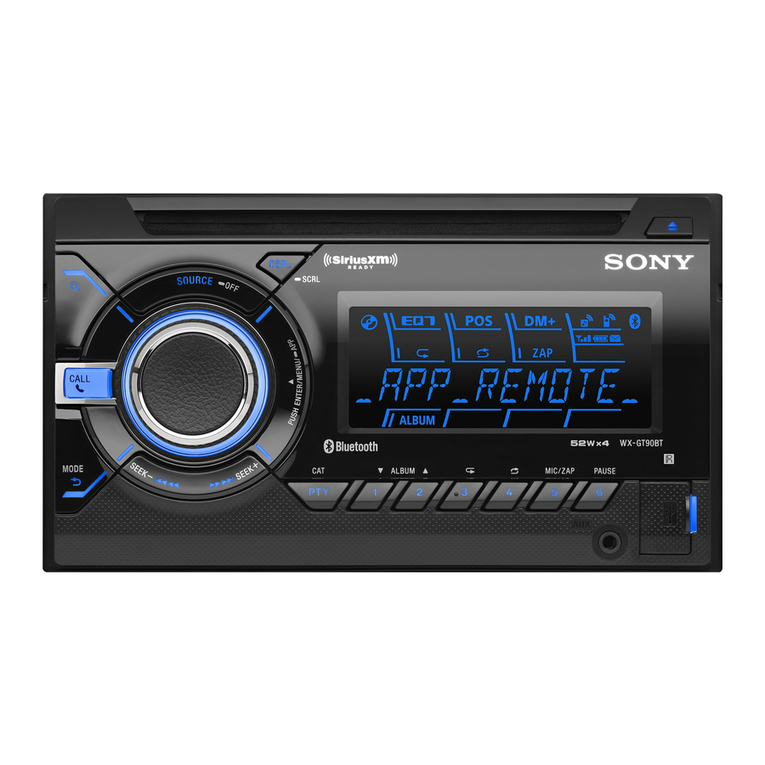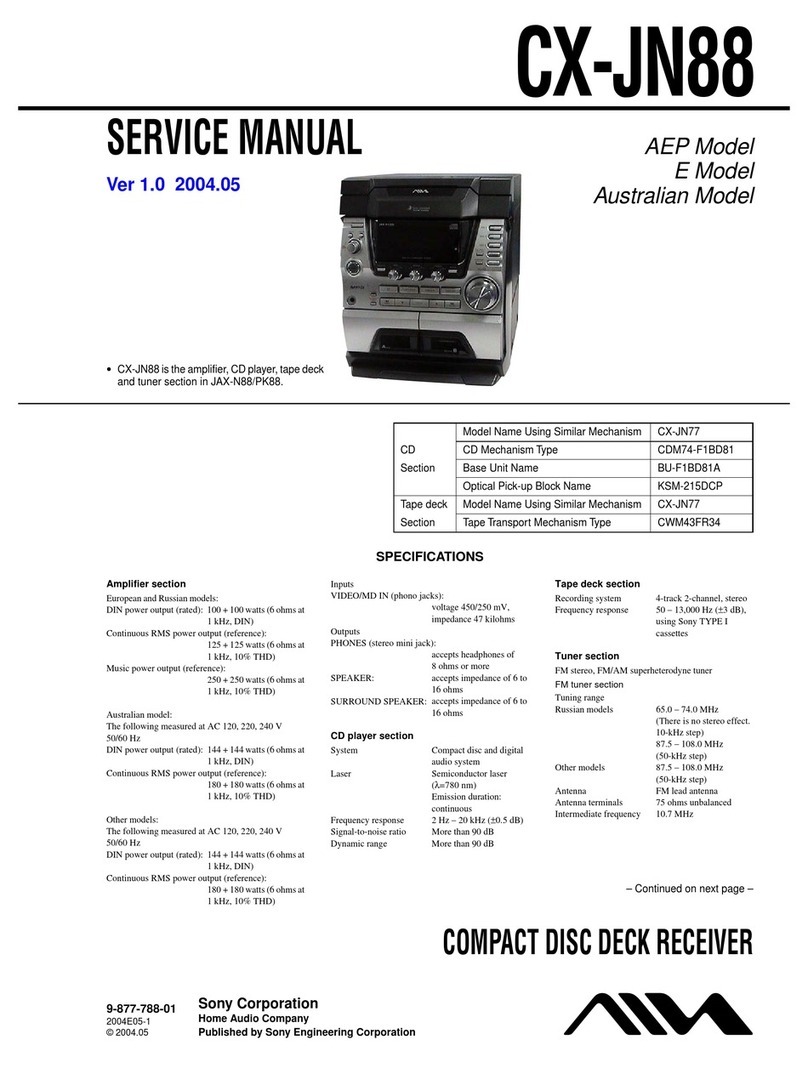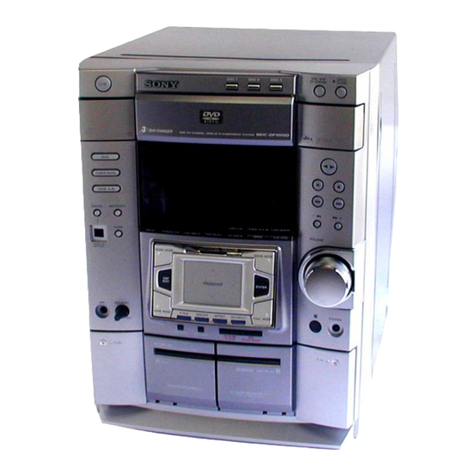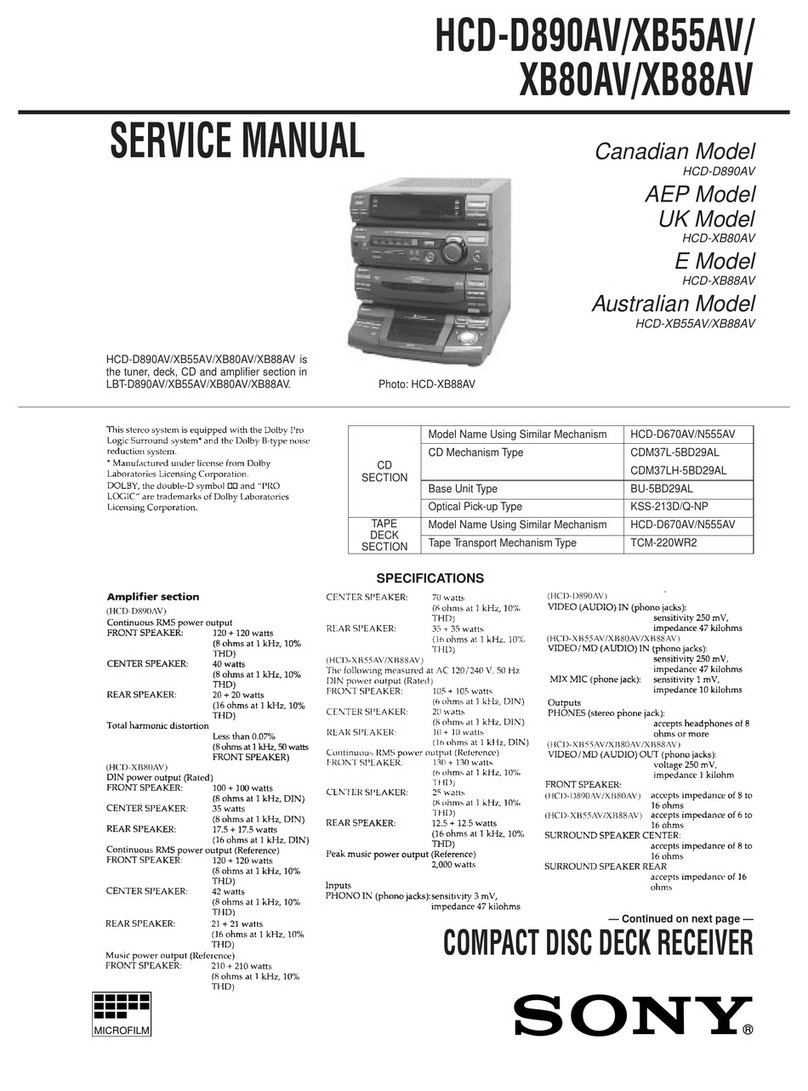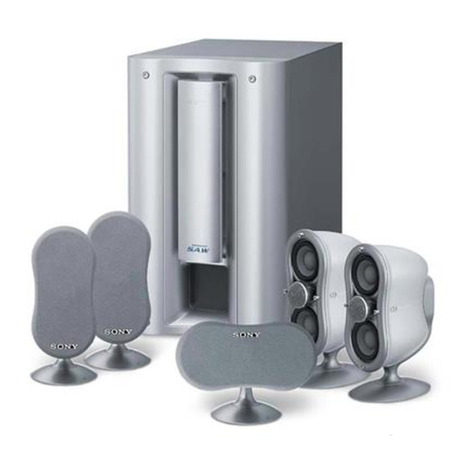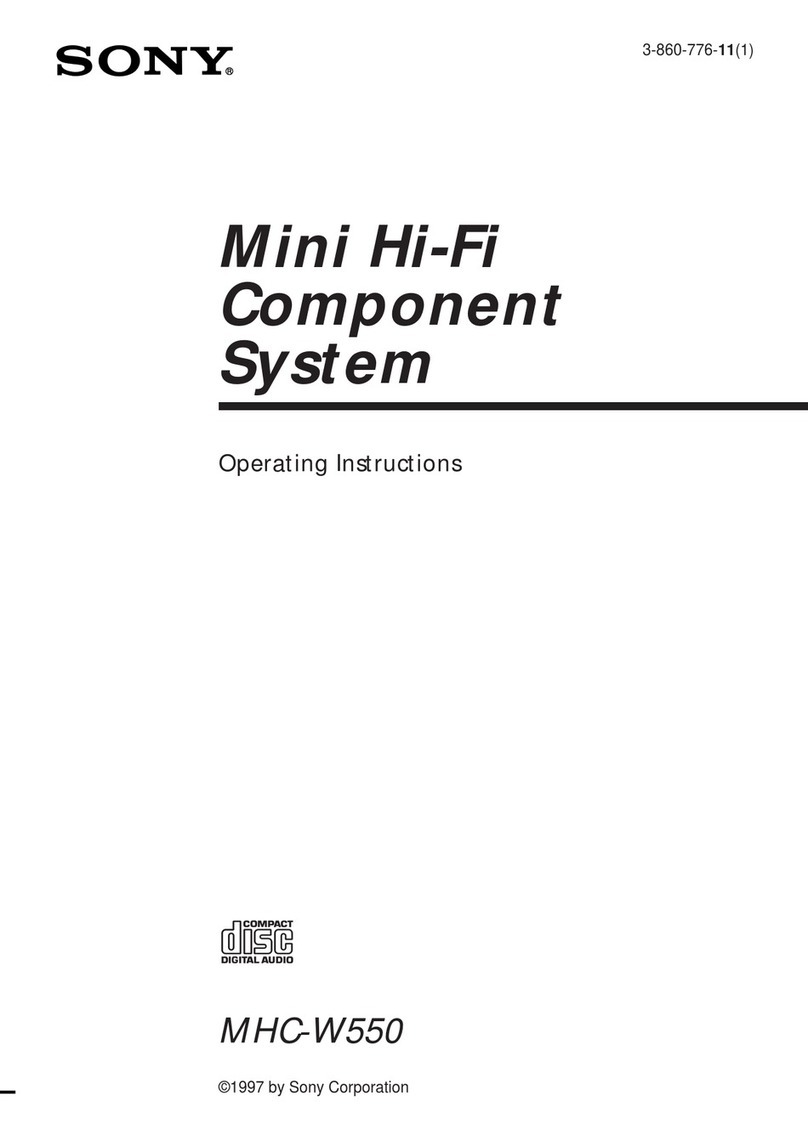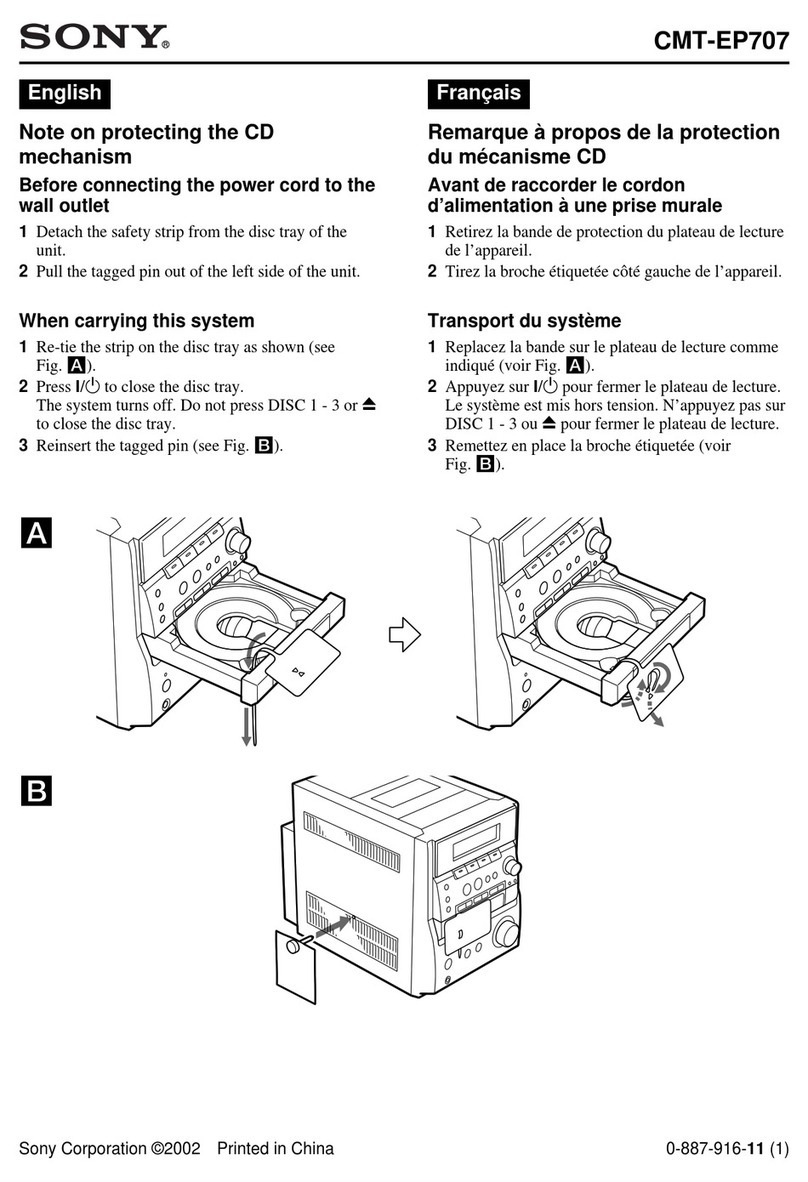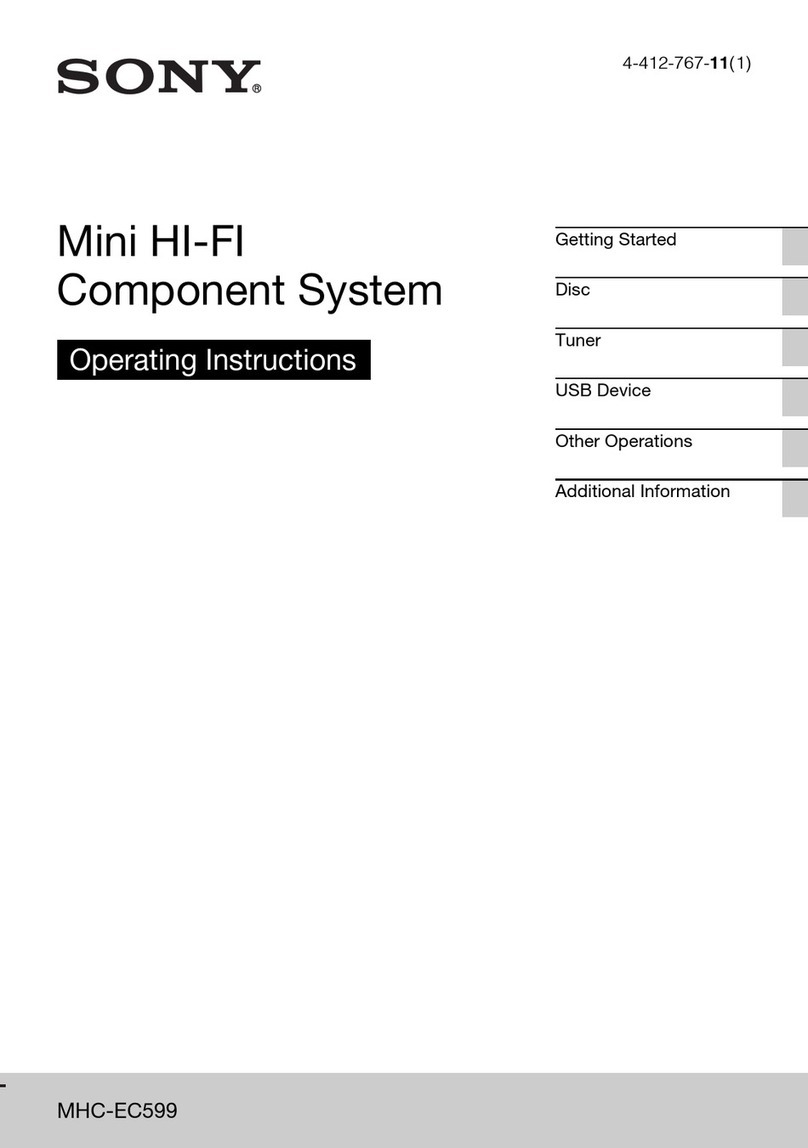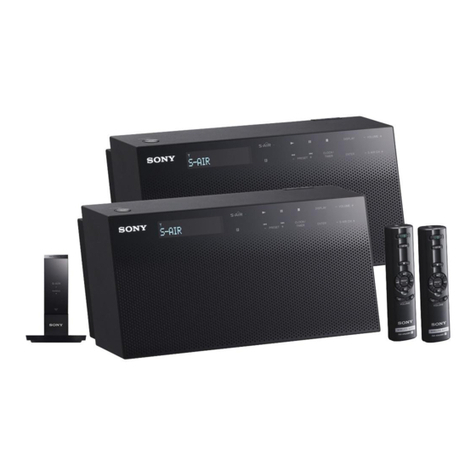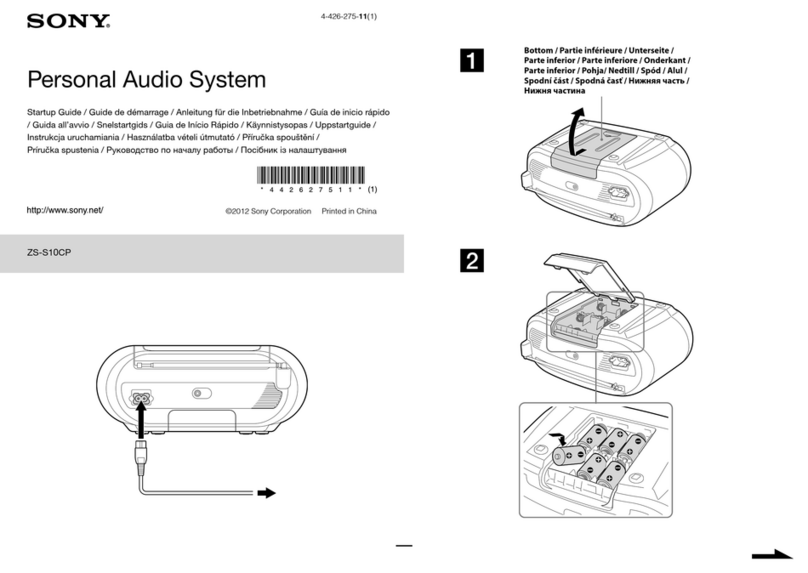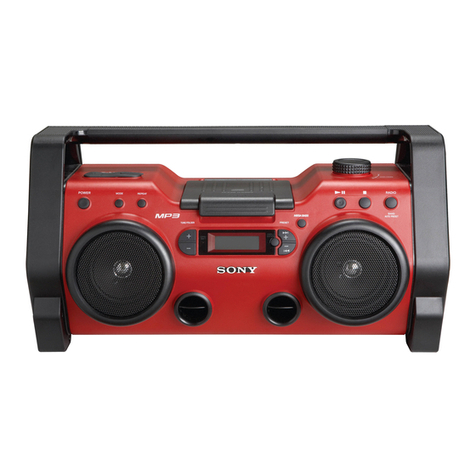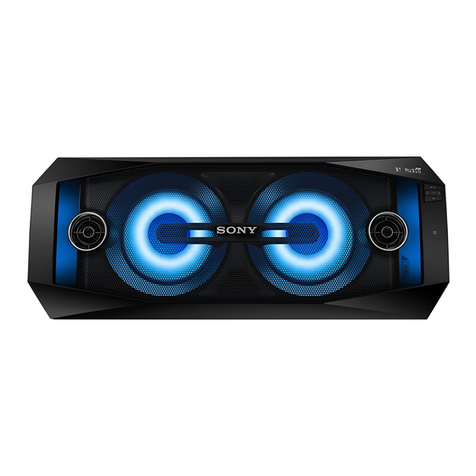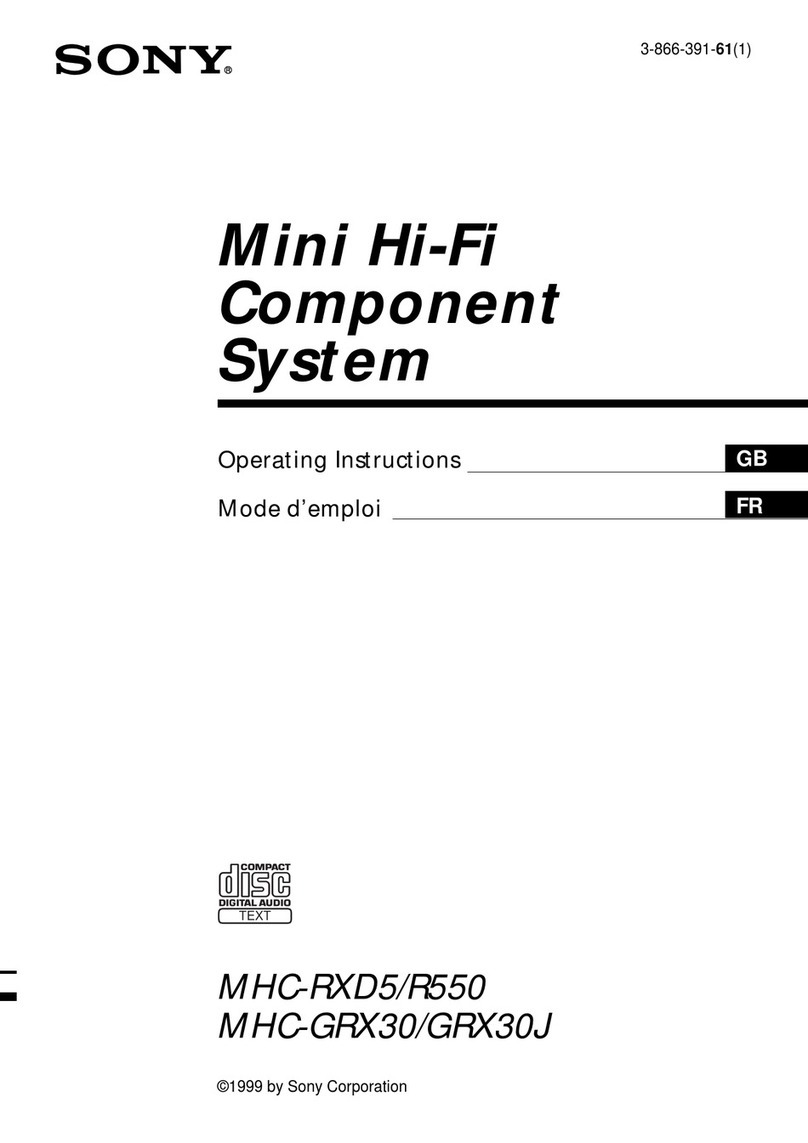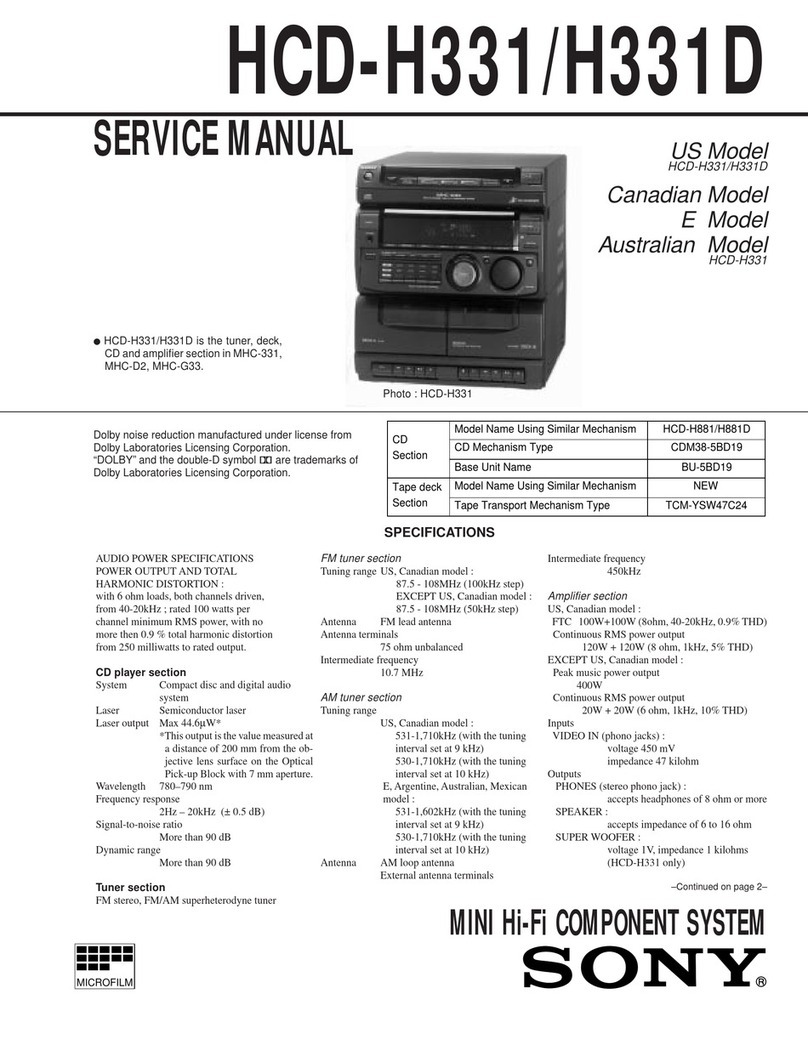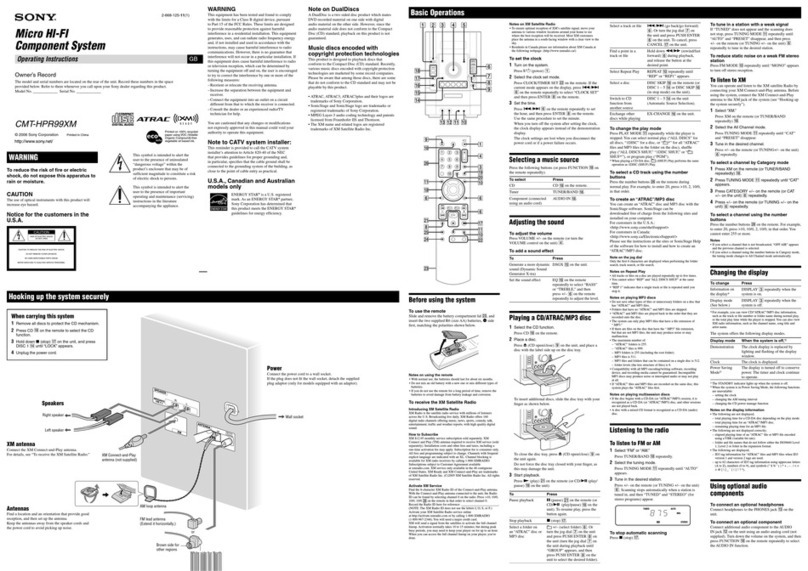— 2 —
SAFETY-RELATED COMPONENT WARNING!!
COMPONENTS IDENTIFIED BY MARK !OR DOTTED LINEWITH
MARK !ON THE SCHEMATIC DIAGRAMS AND IN THE PARTS
LIST ARE CRITICAL TO SAFE OPERATION. REPLACE THESE
COMPONENTS WITH SONY PARTS WHOSE PART NUMBERS
APPEAR AS SHOWN IN THIS MANUAL OR IN SUPPLEMENTS
PUBLISHED BY SONY.
TABLE OF CONTENTS
1. GENERAL ······································································ 3
2. DISASSEMBLY
2-1. Case ···················································································· 4
2-2. Front Panel Section ···························································· 4
2-3. PRE Board ·········································································· 5
2-4. Function board, Relay board, SP TM board, Trans board,
Power board········································································ 5
2-5. Mechanism Deck ································································ 6
2-6. Chassis (T2) Assy ······························································· 6
2-7. BD Board············································································ 7
2-8. Roller Arm Block Assy······················································· 7
2-9. Chassis (OPT), Chucking Arm Assy ·································· 8
2-10. Motor (SL) Assy (M102), Optical Pick-Up························ 8
3. TEST MODE ·································································· 9
4. ELECTRICAL ADJUSTMENT ······························ 11
5. DIAGRAMS
5-1. Circuit Boards Location ··················································· 14
5-2. Block Diagram ································································· 15
5-3. Schematic Diagram –BD Section– ··································· 18
5-4. Printed Wiring Board –BD Section– ································ 21
5-5. Printed Wiring Board –Panel Section–····························· 23
5-6. Schematic Diagram –Panel Section – ······························ 25
5-7. Printed Wiring Board –PRE Section– ······························ 27
5-8. Schematic Diagram –PRE Section– ································· 29
5-9. Printed Wiring Board –Function Section– ······················· 31
5-10. Schematic Diagram –Function Section– ·························· 33
5-11. Printed Wiring Board –Power Section– ··························· 36
5-12. Schematic Diagram –Power Section– ······························ 39
5-13. IC Pin Function ································································ 42
5-14. IC Block Diagrams ··························································· 44
6. EXPLODEDVIEWS
6-1. Front Panel Section ·························································· 47
6-2. Chassis Section ································································· 48
6-3. Mechanism Deck Section-1 (CDM50)····························· 49
6-4. Mechanism Deck Section-2 (CDM50)····························· 50
7. ELECTRICAL PARTS LIST ··································· 51
Outputs VIDEO/PC OUT jack : Stereo phone
jack, 250mV, 1kΩ
DIGITAL OUT (CD OPTICAL OUT):
Square optical connector jack, –18dBm,
wave jength 660nm
PHONES (headphones) jack :
Stereo mini jack, accepts head phones of
8Ωor more.
General
Power requirements
European model 220–230V AC, 50/60Hz
Other models 110–120V or 220–240V
AC, 50/60Hz adjustable
with voltage selector
Power consumption 66W (when connected to TC-TX101,
MDS-MX101)
Dimensions Approx. 142×125×260mm (w/h/d) incl.
projecting parts and controls
Mass Approx. 4.1kg
NOTES ON HANDLING THE OPTICAL PICK-UP
BLOCK OR BASE UNIT
The laser diode in the optical pick-up block may suffer electrostatic
break-down because of the potential difference generated by the
charged electrostatic load, etc. on clothing and the human body.
During repair, pay attention to electrostatic break-down and also
use the procedure in the printed matter which is included in the
repair parts.
The flexible board is easily damaged and should be handled with
care.
NOTES ON LASER DIODE EMISSION CHECK
The laser beam on this model is concentrated so as to be focused on
the disc reflective surface by the objective lens in the optical pick-
up block. Therefore, when checking the laser diode emission,
observe from more than 30 cm away from the objective lens.
Notes on chip component replacement
•Never reuse a disconnected chip component.
•Noticethattheminus side of atantalumcapacitormay be damaged
by heat.
Flexible Circuit Board Repairing
•Keep the temperature of soldering iron around 270 ˚C during
repairing.
•Do not touch the soldering iron on the same conductor of the
circuit board (within 3 times).
•Be careful not to apply force on the conductor when soldering or
unsoldering.
SERVICE NOTE
